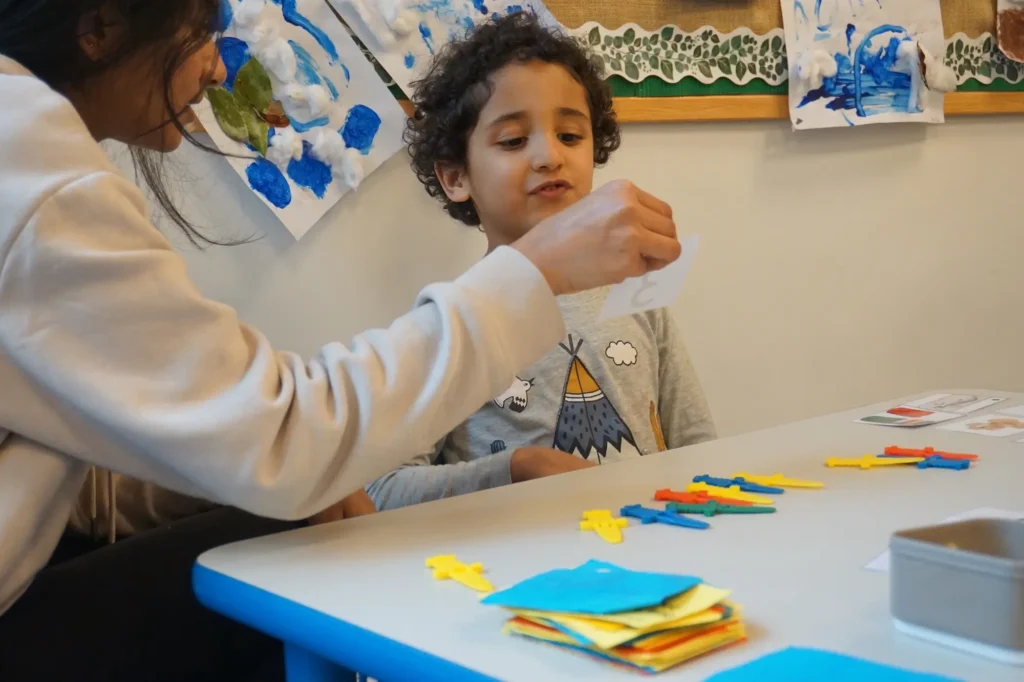
When your child with special educational needs starts school, one of the biggest questions you may have as a parent is how they will be supported to learn in a classroom environment. Parents often ask us very directly: “Does ABA work in schools?” It is a fair and important question, and one that deserves a clear, reassuring answer.
At First Bridge Education, we provide nursery and school education for children aged 2–9, with a strong focus on early intervention. We know the school years can feel daunting, especially if your child has additional needs such as autism, speech and language delay, or sensory challenges. Our role is to explain how our evidence-based approaches, including Applied Behaviour Analysis (ABA), can help children feel confident, safe, and ready to learn in a school setting.
Is ABA allowed in UK schools?
Within the UK education system, schools may use ABA‑informed strategies as part of a multidisciplinary approach where it suits a pupil’s needs and aligns with their EHCP (Educational Health Care Plan). Inspectors look at intent, implementation, and impact: what the plan is, how we deliver it, and what difference it makes, not which label it carries.
What ABA Means in a School Context
Applied Behaviour Analysis (ABA) is not a single “programme” but a collection of evidence-based principles about how people learn. When parents ask, “Does ABA work in schools?” we explain that it is less about a rigid system and more about teaching in small, achievable steps, using clear targets, and reinforcing success so that new skills become independent and useful across the day. Each child at First Bridge Education is working to a programme that has been designed specifically for them.
In practice, this means:
- Defining goals clearly — such as responding to their name, joining circle time, or starting a task independently.
- Teaching step by step — breaking down larger tasks into smaller parts.
- Using the right prompts — gestures, visuals, or words that guide learning.
- Reinforcing success — celebrating progress in a way that motivates the child.
- Fading adult support — so skills are not reliant on constant help but become part of daily life.
ABA in schools is not about delivering more and more hours. It is about using the right strategies, consistently, in ways that fit with a child’s Education, Health and Care Plan (EHCP).
What You and Your Child Gain
So, does ABA work in schools? The benefits can be seen in the progress children make, both in the classroom and at home.
For children, structured ABA-informed teaching:
- Builds confidence and self-esteem.
- Improves communication and independence.
- Supports friendships and social learning.
- Makes transitions and routines feel safer and more predictable.
For families, it often means:
- Clearer communication from school about progress.
- Less stress around daily routines.
- Reassurance that targets are being tracked and met.
- A sense of partnership with the school team.
What does a structured ABA-informed classroom routine look like?
If you’re still asking, “does ABA work in schools?”, structure lowers cognitive load and increases practice.
We keep timing predictable with short blocks and clear starts and finishes, set out materials at each station and embed communication with narration, models, and visuals.
This structure supports attention, communication, and regulation, and it gives teachers and ABA Therapists, a reliable backdrop for measuring what changed.
What You Will See on a Visit
Seeing the classroom in person is often the most reassuring way to answer the question “Does ABA work in schools?”. It allows you to see structure, support, and independence working together.
We encourage parents to visit our Imperial Wharf nursery and school to see these approaches in action. You will see how the data is recorded that provides the evidence to inform the programmes each child is working too, how staff embed EHCP targets into the timetable, and how progress is monitored.
Our Commitment to Evidence-Based Practice
At First Bridge Education, evidence-based practice means three things working together:
- The best available research.
- The expertise of our clinicians and teachers.
- The goals and context of each child.
We select strategies with a strong research base, supervise staff carefully, and review impact. Our aim is not to collect endless data, but to show meaningful progress in skills that matter for your child’s daily life.
Next Steps
If you are asking yourself “Could ABA work in school for my child?”, we would love to talk with you.
You can contact us to arrange a show around and our classrooms in action.
Every child is unique, and every family deserves reassurance that the right support is in place. At First Bridge, our commitment is simple: safe, structured, and compassionate education for children aged 2–9, built on evidence and partnership with families.
